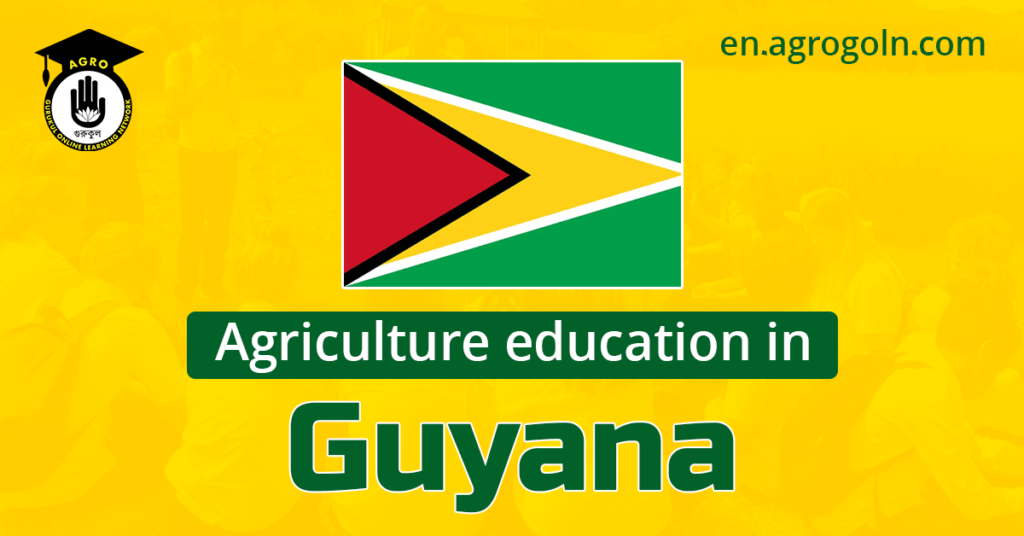Guyana, situated on the northeastern shoulder of the South American continent, boasts vast expanses of pristine rainforests, savannahs, and wetlands. With its fertile lands and abundant water resources, agriculture plays a pivotal role in Guyana’s economy and culture. As with many sectors, the continuous improvement and innovation of agricultural practices are crucial, and this is where agricultural education comes into play.
Historical Overview
Guyana’s agricultural legacy is rooted in its colonial past when sugarcane and rice production were the primary economic drivers. Both crops required extensive knowledge, not just about planting and harvesting, but about managing the complex irrigation systems and understanding the delicate balance of the coastal ecosystem.
Given the importance of agriculture to the country’s economy, the need for trained professionals became evident. Early agricultural education in Guyana took the form of apprenticeships and on-the-job training, but as the sector became more complex and diversified, a more structured educational system became essential.
The Guyana School of Agriculture (GSA)
The Guyana School of Agriculture (GSA) was established in 1963, a landmark in formalizing agricultural education in the country. Initially, GSA’s role was to provide certificate courses in agriculture and other related fields. With time, it expanded its offerings to include diploma courses, reflecting the need for higher-skilled professionals in the sector.
The institution’s curriculum is comprehensive, tackling subjects from soil science, crop management, and animal husbandry to more advanced topics like agribusiness management and agricultural engineering.
Role of the University of Guyana (UG)
The University of Guyana (UG), founded in 1963, has played a significant role in advancing agricultural education. The Faculty of Agriculture and Forestry at UG offers undergraduate and postgraduate programs in subjects like general agriculture, forestry, and fisheries management.
UG also emphasizes research, which is pivotal for the adaptation and development of agriculture in Guyana. Given the country’s unique coastal ecology, studies on saltwater intrusion, soil salinity, and sustainable farming practices have been crucial.
Extension Services
Agricultural education in Guyana isn’t limited to the classroom. Extension services play a pivotal role in transferring knowledge from educational institutions to the fields. Through the Ministry of Agriculture, Guyana has trained extension officers who visit farms, offer advice on best practices, and introduce farmers to new technologies and methodologies. This hands-on approach ensures that even farmers without formal education have access to the latest knowledge.
Challenges and Opportunities
Climate Change
One of the significant challenges facing agriculture globally is climate change, and Guyana is no exception. With much of its arable land situated on the low-lying coastal plain, rising sea levels and changing weather patterns can have devastating effects. Agricultural education, in this context, has had to adapt to these changes, emphasizing sustainable farming practices, water management, and crop diversification.
Technology and Innovation
Modern agriculture isn’t just about tilling the soil; it’s about using technology to improve yields, reduce waste, and ensure sustainability. Drones, precision agriculture, and biotechnology are all becoming vital tools for the modern farmer. Incorporating these into the curriculum ensures that graduates are ready for the challenges of 21st-century farming.
Emigration
Like many countries in the Caribbean and South America, Guyana faces a brain drain, with many educated professionals seeking opportunities abroad. This has implications for the agricultural sector, which needs skilled professionals to continue innovating and growing. While emigration can be a challenge, it also presents an opportunity: Guyanese professionals abroad can bring back new skills, knowledge, and perspectives, enriching the local agricultural scene.
The Way Forward
Agricultural education in Guyana needs to be dynamic, responding to both global and local challenges. A multi-faceted approach, combining traditional knowledge with modern technology, can ensure that the sector remains vibrant and productive.
Collaboration with international institutions can also be beneficial. By partnering with universities and research institutions from around the world, Guyana can tap into a wealth of knowledge and resources.
Finally, agricultural education isn’t just for professionals. Public education campaigns about the importance of local food, sustainable farming, and the role of agriculture in Guyana’s heritage can help foster a sense of pride and appreciation for the sector among the general population.
Conclusion
Guyana’s agricultural landscape is both a reflection of its rich history and a testament to its potential for the future. At the heart of this lies agricultural education, ensuring that each generation is equipped with the knowledge and skills to nurture the land, innovate, and adapt to the ever-changing global landscape. As Guyana stands on the cusp of significant economic changes, with new industries emerging, it’s essential to remember the foundational role of agriculture and the importance of educating the next generation of agricultural professionals.

